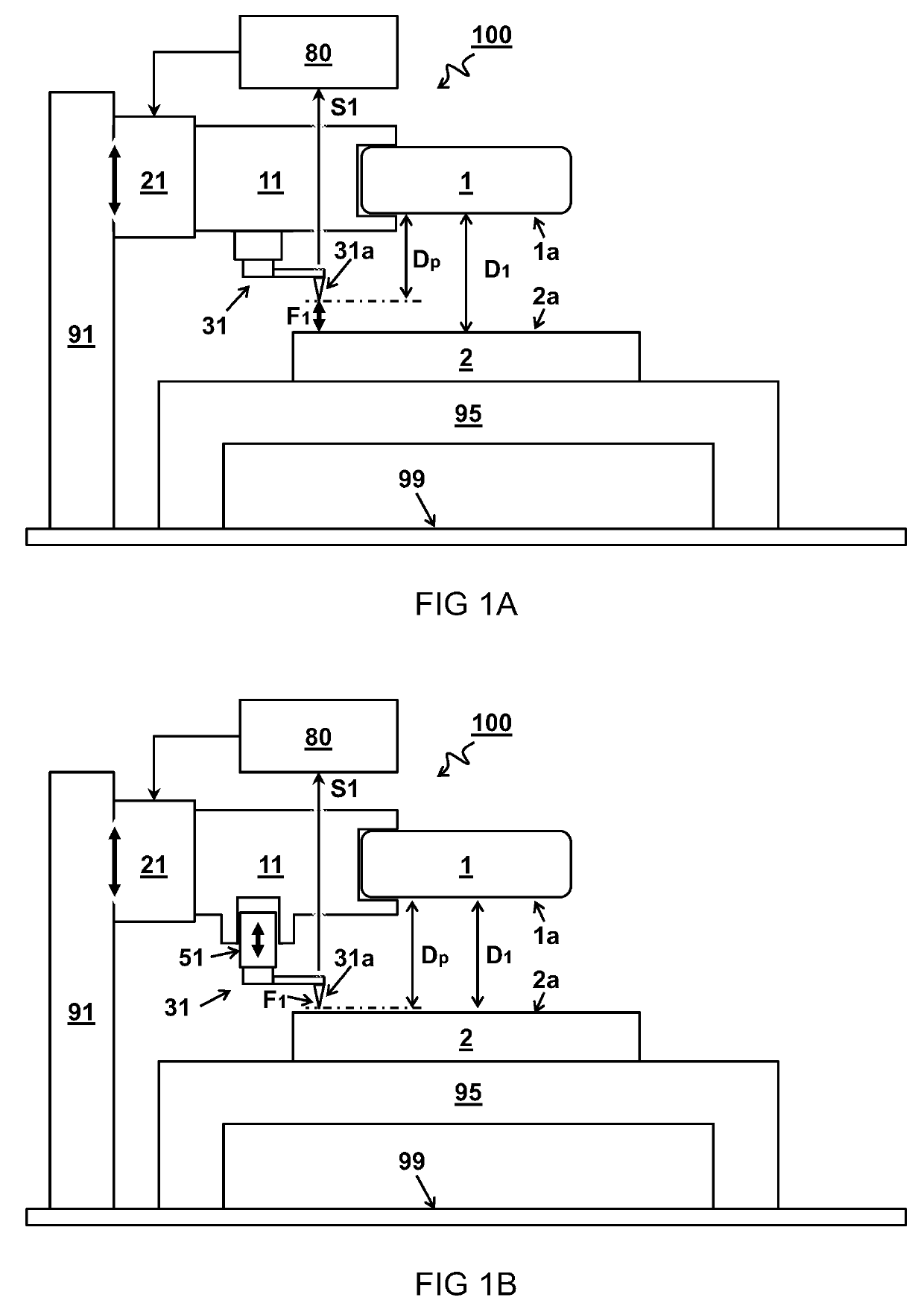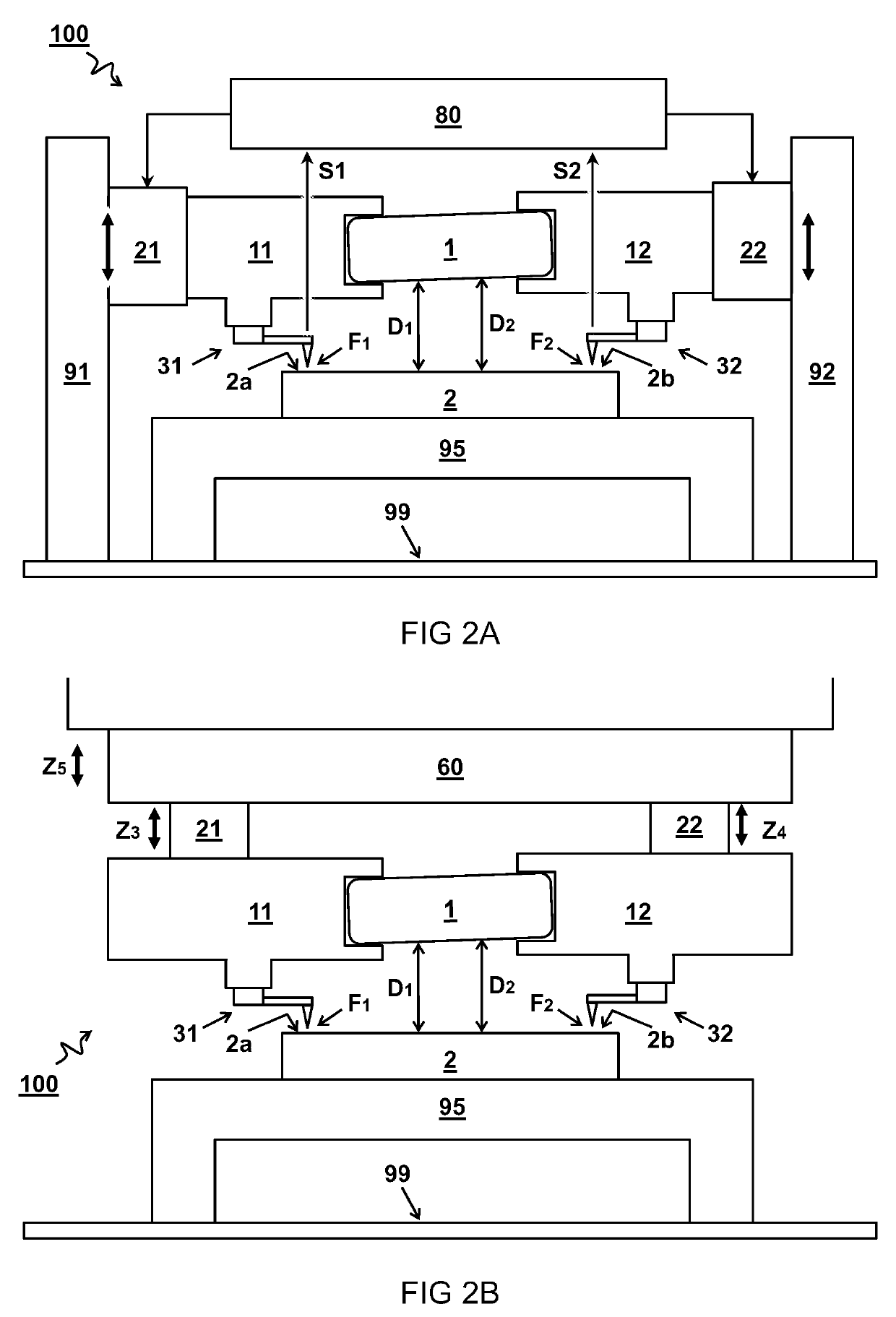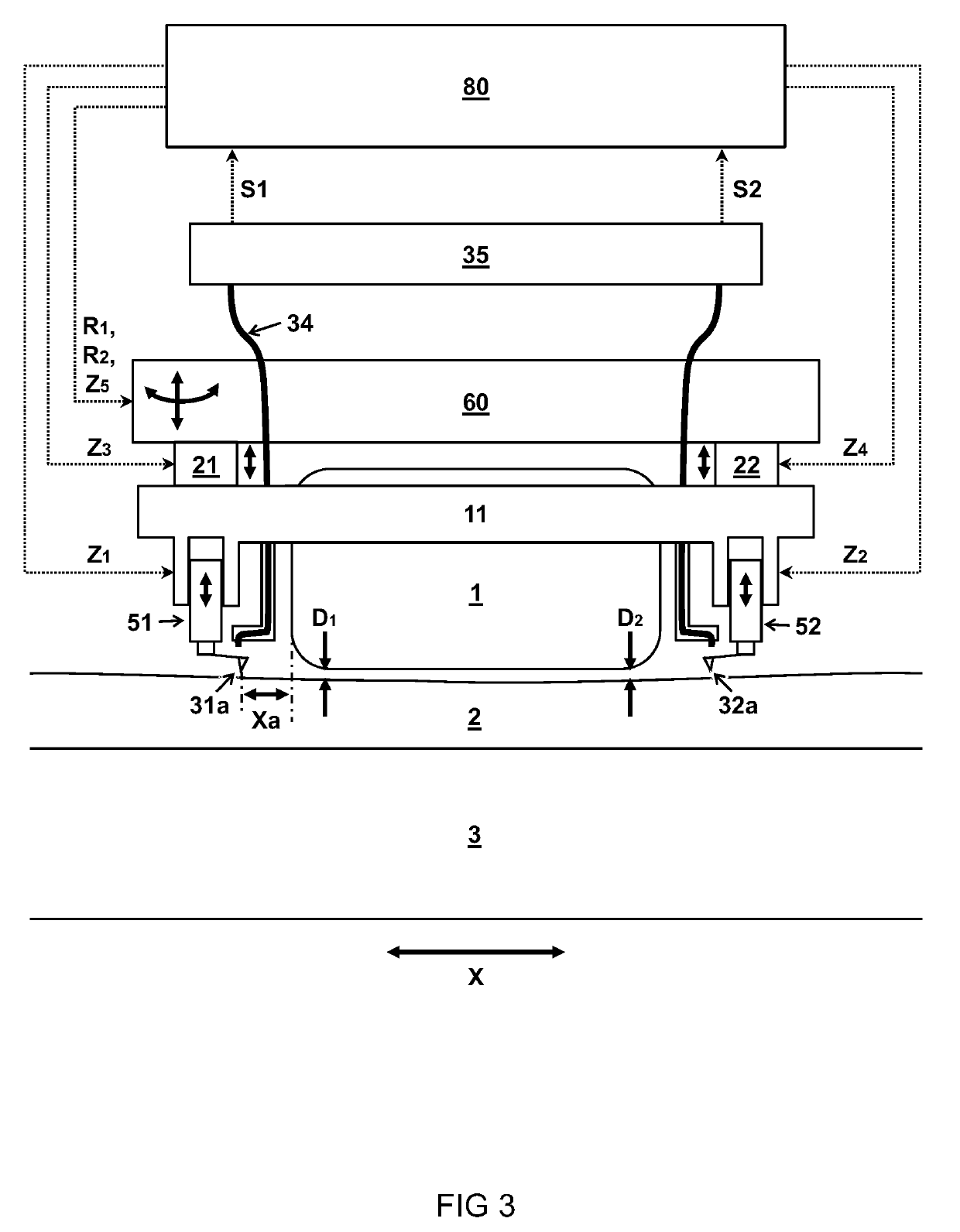Alignment system and method
- Summary
- Abstract
- Description
- Claims
- Application Information
AI Technical Summary
Benefits of technology
Problems solved by technology
Method used
Image
Examples
first embodiment
[0030]FIG. 1A schematically illustrates an alignment system 100 for keeping a first object 1 at a controlled distanced D1 with respect to a second object 2.
[0031]In the embodiment, the system 100 comprises an object stage 11 configured to hold a surface 1a of the first object 1 at a distance D1 over a surface 2a of the second object 2. An object stage actuator 21 is configured to actuate the object stage 11 to vary the distance D1 between the surfaces 1a,2a of the first and second objects 1,2. A sensor device 31 comprising a probe tip 31a is connected at a predetermined probe level distance Dp relative to the surface 1a of the first object 1, in use, held by the object stage 11. The probe tip 31a is configured to perform an atomic force measurement AFM of a force F1 exerted via the probe tip 31a on a surface 2a of the second object 2.
[0032]In one embodiment, a controller 80 configured to control the object stage actuator 21 as a function of the measured force F1 to keep the first ob...
second embodiment
[0035]FIG. 1B schematically illustrates an alignments system 100 with adjustable probe level distance Dp.
[0036]In the embodiment, the sensor device 31 comprising the probe tip 31a is connected to the object stage 11 via a sensor stage 51, wherein the sensor stage 51 comprises an actuator configured to variably set the probe level distance Dp between a level of the probe tip 31a and a level of the surface 1a of the first object 1. For example, the probe level distance Dp is measured transverse to the surface 2a of the second object 2. In another or further embodiment, the probe level distance Dp is set as a function of a desired distance D1 between the first object 1 and second object 2.
[0037]In one embodiment, the probe level distance Dp between the first object 1 and the probe tip 31a is set close or equal to the desired distance D1 between the first object 1 and second object 2, e.g. within a margin of less than one micrometre, less than hundred nanometres, or less than ten nanome...
third embodiment
[0039]FIG. 2A schematically illustrates an alignments system 100 with multiple sensor devices.
[0040]In one embodiment, the system 100 comprises at least two sensor devices 31,32 each configured to measure a force F1,F2 between a respective probe tip 31a,32a and different parts 2a,2b of the surface 2a of the second object 2. In another or further embodiment, the system comprises one or more object stage actuators 21,22 configured to control respective distances D1,D2 between the first object 1 and the different parts 2a,2b of the surface of the second object 2. In another or further embodiment, the one or more object stage actuators 21,22 are configured to control a distance and tilt of the first object 1 with respect to the surface 2a,2b of the second object 2.
PUM
 Login to View More
Login to View More Abstract
Description
Claims
Application Information
 Login to View More
Login to View More - Generate Ideas
- Intellectual Property
- Life Sciences
- Materials
- Tech Scout
- Unparalleled Data Quality
- Higher Quality Content
- 60% Fewer Hallucinations
Browse by: Latest US Patents, China's latest patents, Technical Efficacy Thesaurus, Application Domain, Technology Topic, Popular Technical Reports.
© 2025 PatSnap. All rights reserved.Legal|Privacy policy|Modern Slavery Act Transparency Statement|Sitemap|About US| Contact US: help@patsnap.com



